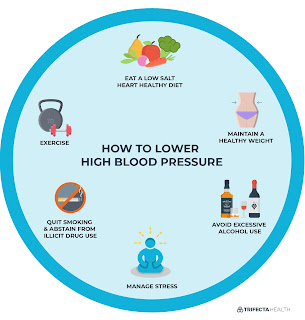Salt's Effect On Blood Pressure Decreased By Physical Activity
Salt's Effect On Blood Pressure Decreased By Physical Activity
The more genuinely dynamic you are, the less your pulse ascends because of a high-salt eating routine, specialists detailed at the American Heart Association's Nutrition, Physical Activity and Metabolism/Cardiovascular Disease Epidemiology and Prevention 2011 Scientific Sessions.
"Patients ought to be encouraged to expand their active work and eat less sodium," said Casey M. Rebholz, M.P.H., lead creator of the review and a clinical understudy at the Tulane School of Medicine and doctoral understudy at the Tulane University School of Public Health and Tropical Medicine in New Orleans. "Limiting sodium is especially significant in bringing down circulatory strain among additional stationary individuals."
Examiners analyzed concentrate on members' circulatory strain on two one-week eats less carbs, one low in sodium (3,000 mg/day) and the other high in sodium (18,000 mg/day).
The American Heart Association suggests consuming under 1,500 mg/day of sodium.
On the off chance that an individual's normal systolic pulse (the top number in the perusing, estimated when the heart is contracting) expanded 5% or more from the low-sodium to the high-sodium routine, the specialists marked them as high salt-delicate.
In view of actual work polls, scientists separated members into four gatherings going from extremely dynamic to very stationary.
The typical expansions in systolic pulse in the wake of changing from low to high sodium, adapted to progress in years and orientation, were:
5.27 mm Hg at all dynamic gathering
5.07 mm Hg in the close to-most minimal movement bunch
4.93 mm Hg in the close to most noteworthy movement bunch
3.88 mm Hg in the most dynamic gathering
Contrasted and the stationary gathering, the chances of being salt-delicate, adapted to progress in years and orientation, fell:
10% in the close to-most minimal movement bunch
17% in the close to-most noteworthy movement bunch
38% in the most dynamic gathering
"In every one of the examinations we tracked down a portion reaction relationship with the greater movement, the better," Rebholz said.
The members were 1,906 Han Chinese grown-ups (normal age 38) in the Genetic Epidemiology Network of Salt Sensitivity (GenSalt), a huge undertaking to recognize hereditary and natural elements adding to salt responsiveness. Kin and their folks were welcome to become associated with GenSalt in the event that no less than one kin had pre-hypertension (pulse between 120/80 and 139/89 mm Hg) or stage-1 hypertension (between 140/90 and 159/99 mm Hg). Nobody was on pulse drug during the review.
The GenSalt project is situated in country China on the grounds that the homogeneous populace makes it more probable that qualities compelling to pulse control will be recognized.
"The concentrate should be rehashed, yet I suspect that the connection between actual work and salt-awareness will apply to different populaces," Rebholz said.
Notes:
Co-creators are: Dongfeng Gu, Ph.D.; Jing Chen, M.D., M.S.; Jian-feng Huang, M.D.; Jie Cao, M.D., M.S.; Ji-chun Chen, M.D., M.S.; Jianxin Li, M.D.; Fanghong Lu, M.D.; Jianjun Mu, M.D.; Jixiang Ma, M.D.; Dongsheng Hu, M.D., M.S.; Xu Ji, M.D.; Lydia A. Bazzano, M.D., Ph.D.; Depei Liu, M.D., Ph.D.; and Jiang He, M.D., Ph.D.

.jpeg)


Comments
Post a Comment